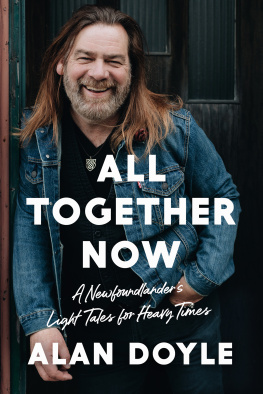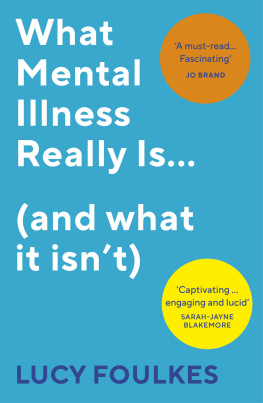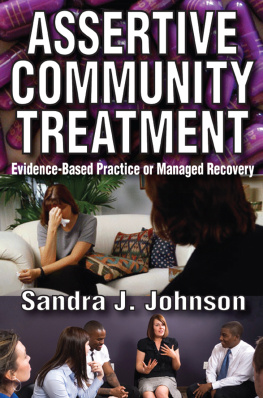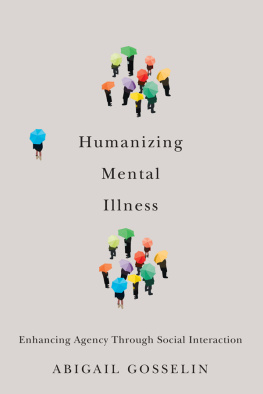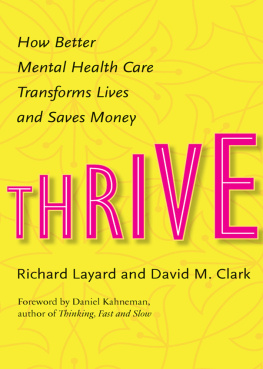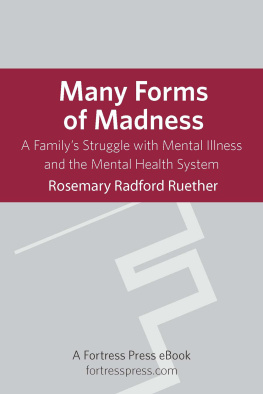FOUNTAIN HOUSE
FOUNTAIN
HOUSE
Creating Community in Mental Health Practice
ALAN DOYLE, JULIUS LANOIL, AND KENNETH J. DUDEK

COLUMBIA UNIVERSITY PRESS
NEW YORK
Columbia University Press
Publishers Since 1893
New York Chichester, West Sussex
cup.columbia.edu
Copyright 2013 Alan Doyle, Julius Lanoil, and Kenneth Dudek
All rights reserved
E-ISBN: 978-2-231-53599-1 (e-book)
The authors are donating all proceeds generated by the sale of this book to Fountain House, New York, to further its mission of hope and empowerment to people everywhere who are living with mental illness.
Library of Congress Cataloging-in-Publication Data
Doyle, Alan.
Fountain House : creating community in mental health practice / Alan Doyle, Julius Lanoil, Kenneth J. Dudek.
pages cm
Includes bibliographical references and index.
ISBN 978-0-231-15710-0 (cloth : alk. paper)ISBN 978-0-231-53599-1 (e-book)
1. Mentally illInstitutional careUnited StatesHistory. 2. Mentally illNew York (State)New YorkRehabilitation. 3. Mentally illDeinstitutionalizationNew York (State)New York. 4. Community mental health servicesNew York (State)New YorkHistory. 5. Fountain House (New York, N. Y.) I. Lanoil, Julius. II. Dudek, Kenneth J. III. Title.
RC439.55.D69 2013
362.2'2097471dc23
2013010188
COVER DESIGN: Christopher Sergio
A Columbia University Press E-book.
CUP would be pleased to hear about your reading experience with this e-book at .
References to websites (URLs) were accurate at the time of writing. Neither the author nor Columbia University Press is responsible for URLs that may have expired or changed since the manuscript was prepared.
This book is dedicated to the memory of John Henderson Beard (19231982), whose unique insight and fierce determination created Fountain House and its hope for recovery for anyone afflicted with mental illness.
CONTENTS
by Ezra S. Susser
This book on the origins and stance of Fountain House is likely to become a classic. It illuminates the driving ideas behind one of the major movements in mental health care and advocacy. Although focused mainly on the original Fountain House in New York City, it portrays the source of what is now a global movement. I anticipate that it will be widely read and discussed. It could (and should) have a significant influence on future developments in mental health.
One of the remarkable features of the book is that the authors find ways to express profound ideas in language that is clear and engaging. What they have written will be accessible and informative for a wide range of readers. The book is also scholarly and will be essential reading for those who are interested in the history of consumer and advocacy movements as well as that of mental health care. The material is novel, in that the story of Fountain House has not been told before in parallel with the evolution of the thinking behind it. That it has origins in the New York settlement houses established for poor and immigrant communities in the early twentieth century will be surprising to many.
When I read the book, I found it particularly compelling that the basic principles on which Fountain House was established were so , is elaborated throughout the book.
One reason for emphasizing this point is that sustainable changes in community mental health care require strategies that are based on premises that can be simply communicated and understood. These premises need to be understood not only by advocates or practitioners, but also by users, informal caregivers, service providers, community groups, government agencies, and other constituencies, many of which are not primarily focused on mental health. From a global perspective, one has to assume that some constituencies will have only basic or no literacy. Sustainability requires at least that these constituencies will not sabotage the movement for change, and at best that they will be active supporters. The history of community mental health is replete with approaches that were initially well developed but not widely taken up or sustained. Among the many reasons, an important one is that often the underlying rationale for these approaches was not widely appreciated and was not articulated in terms of something that all human beings require and can understand. Another is that the approaches were not sufficiently adapted for use across vastly different local contexts. Both sustainability and meaningful adaptation of specific practices depend upon readily communicable basic ideas as a starting point.
I believe this book will be useful to anyone interested in mental health, in any country. Indeed, the principles that underlie Fountain House are particularly relevant today in low- and middle-income countries. The actual uptake of the book in these countries will be contingent on the ability to see that the basic premises of Fountain House are adaptable to a variety of very different contexts. The distillation of these premises into universally understandable principles, however, creates the potential for this uptake and adaptation to occur.
EZRA S. SUSSER
Fountain House is about an idea in psychiatric recovery whose time has come. Most people who know of Fountain House think of it as a place for people with psychiatric illnesses located on West 47th Street in New York Citys historic Hells Kitchen neighborhood. They associate its founding in 1948 with a group of ex-patients and their wealthy sponsors amid high hopes of helping one another to reenter society upon their discharge from a mental hospital. They may even be aware of the formative influence of John Beard, who labored for more than twenty-five years on the early design and development of Fountain House. Most are unaware, however, that Fountain House is more than an operational endeavor that achieves recuperative results with its membership. It is an idea whose expression combines both a compelling ideal of human nature, i.e., community, and a treatment methodology, , that has inspired its replication in hundreds of places throughout the world.
Some would contend that Fountain House, while a pioneer for those living with mental illness in the past, represents a practice that is old and outmoded (Whitley, Strickler, & Drake, 2011). They claim that it has lost its relevance as a contemporary concept of recovery in mental health policy and practice (a proposition that this book challenges). The recovery paradigm (Anthony, 1993; Hogan, 1994; Whitley & Drake, 2010) holds out the hope of recovery for those who live with an illness that was once considered to be chronic and progressively debilitating. The paradigm affirms that they can live active, productive, and assimilated lives in society and asserts the rights of people with serious mental illness for self-determination and control over the treatment of their illness. Consequently, any topical discussion of broad-scale public policy for improving mental health services must integrate consumers of mental health services as active participants in their own recovery and be able to demonstrate the outcomes of personal empowerment and social inclusion with tangible evidence (hence, the call for evidence-based practice).
In point of fact, Fountain House, as we shall describe here, established all of these ideas and practices as essential to recovery and the social inclusion of people with mental illness decades before their broader public recognition in the 1990s. Long before these ideas became accepted practice in rehabilitation, Fountain House had charted the basic coordinates of employment and housing for people with mental illness, as well as other current practices in mental health (Sowbel & Starnes, 2006). Through decades of reflective trial and error Fountain House has forged a robust model, which in 2011 was recognized by the U.S. Substance Abuse and Mental Health Services Administration (SAMHSA) as replicable and was placed on the National Registry of Evidence-Based Programs and Practices ( In
Next page

